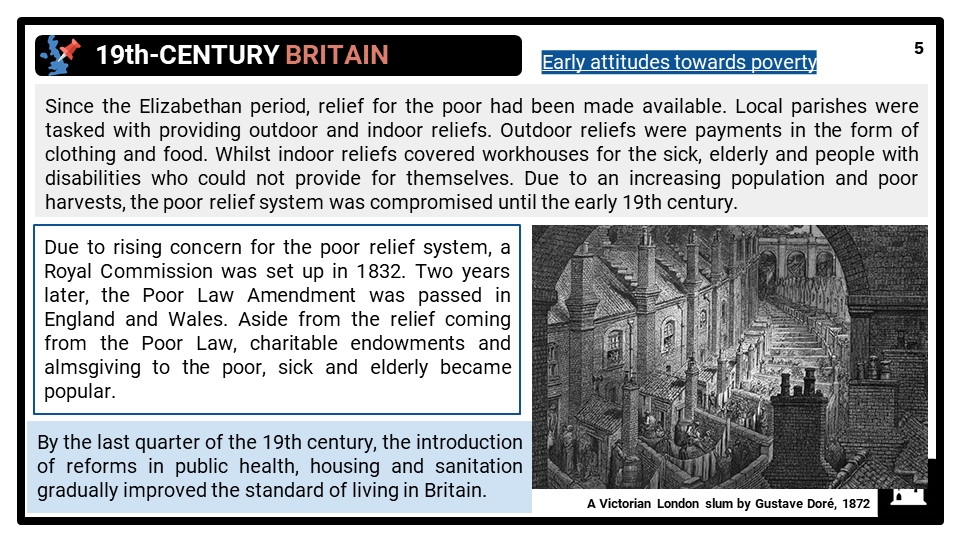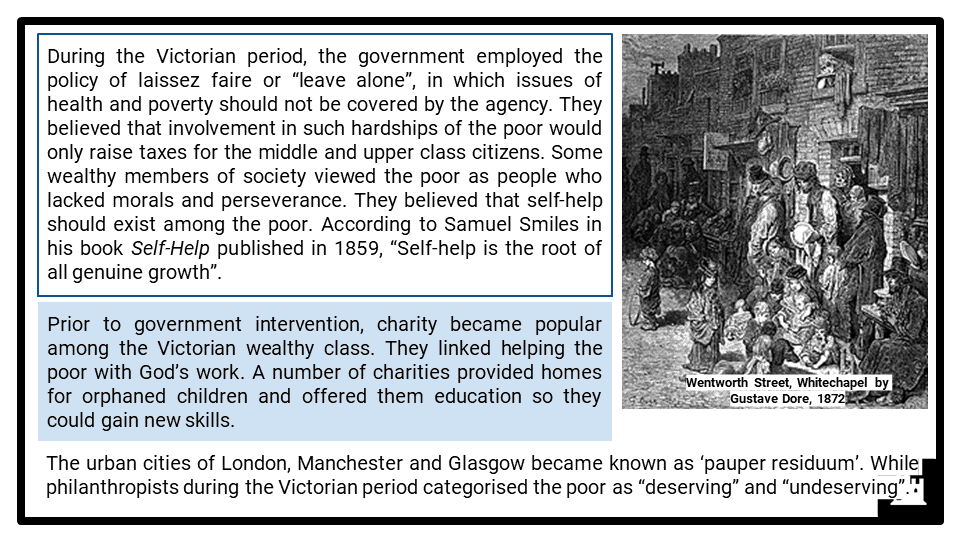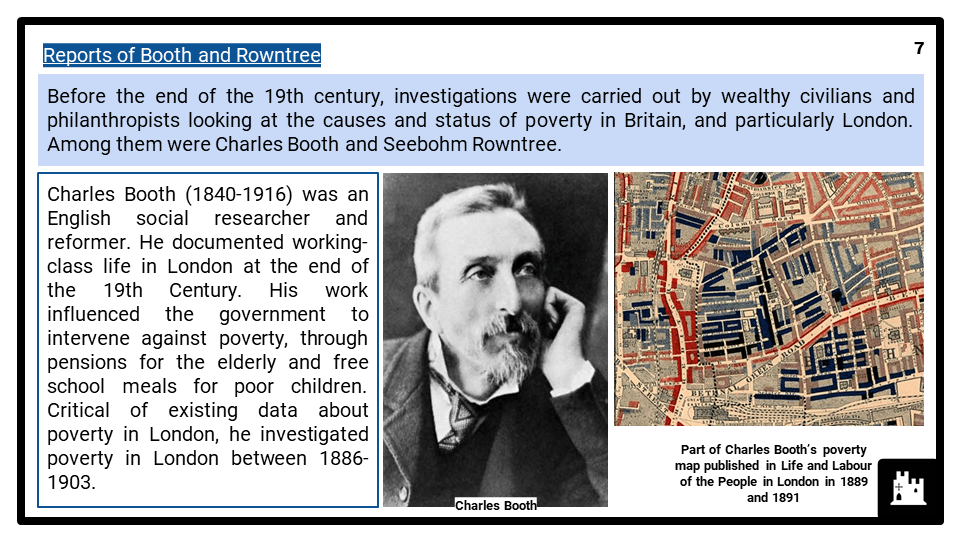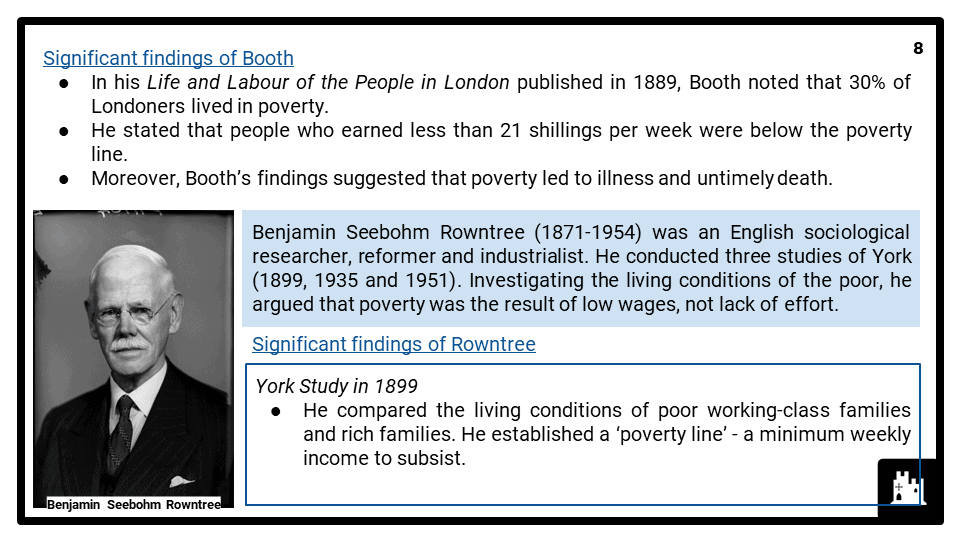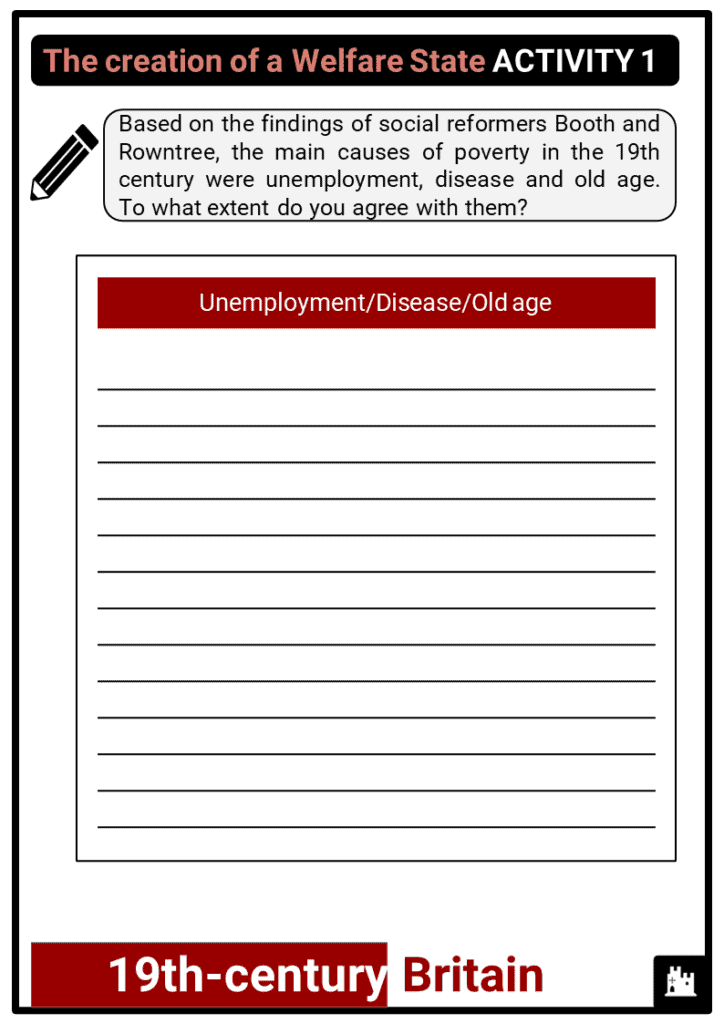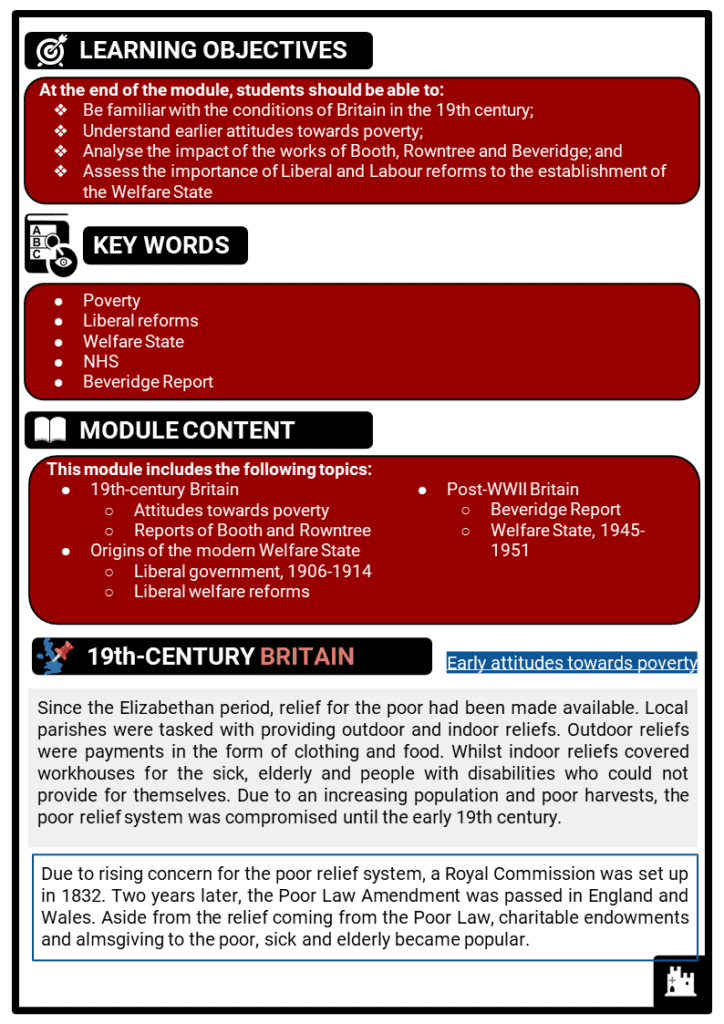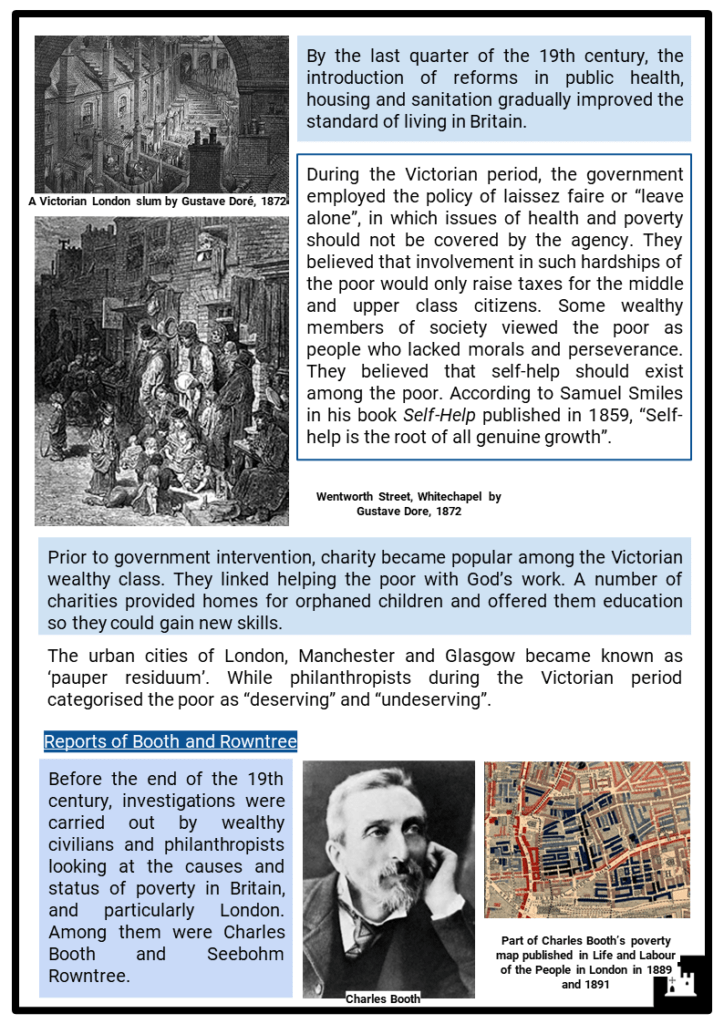Teach any The creation of a Welfare State topic, no prep needed!
Do you want to save dozens of hours in time? Get your evenings and weekends back? Be fully prepared to teach any The creation of a Welfare State KS3 topic?
Every The creation of a Welfare State is covered, and each module comes complete with:
KS3 The creation of a Welfare State
Since the Elizabethan period, relief for the poor had been made available. Local parishes were tasked with providing outdoor and indoor reliefs. Outdoor reliefs were payments in the form of clothing and food. Whilst indoor reliefs covered workhouses for the sick, elderly and people with disabilities who could not provide for themselves. Due to an increasing population and poor harvests, the poor relief system was compromised until the early 19th century.
Due to rising concern for the poor relief system, a Royal Commission was set up in 1832. Two years later, the Poor Law Amendment was passed in England and Wales. Aside from the relief coming from the Poor Law, charitable endowments and almsgiving to the poor, sick and elderly became popular.
Learn more about the rise of the 19th-century Britain, origins of the modern Welfare State and post-WWII Britain with our KS3 resources. You’ll find Student Activities, Lesson Presentation, and Revision Notes ready to download below. KS3 resources are ideally suited for Years 7, 8 and 9, or ages 11-14.

